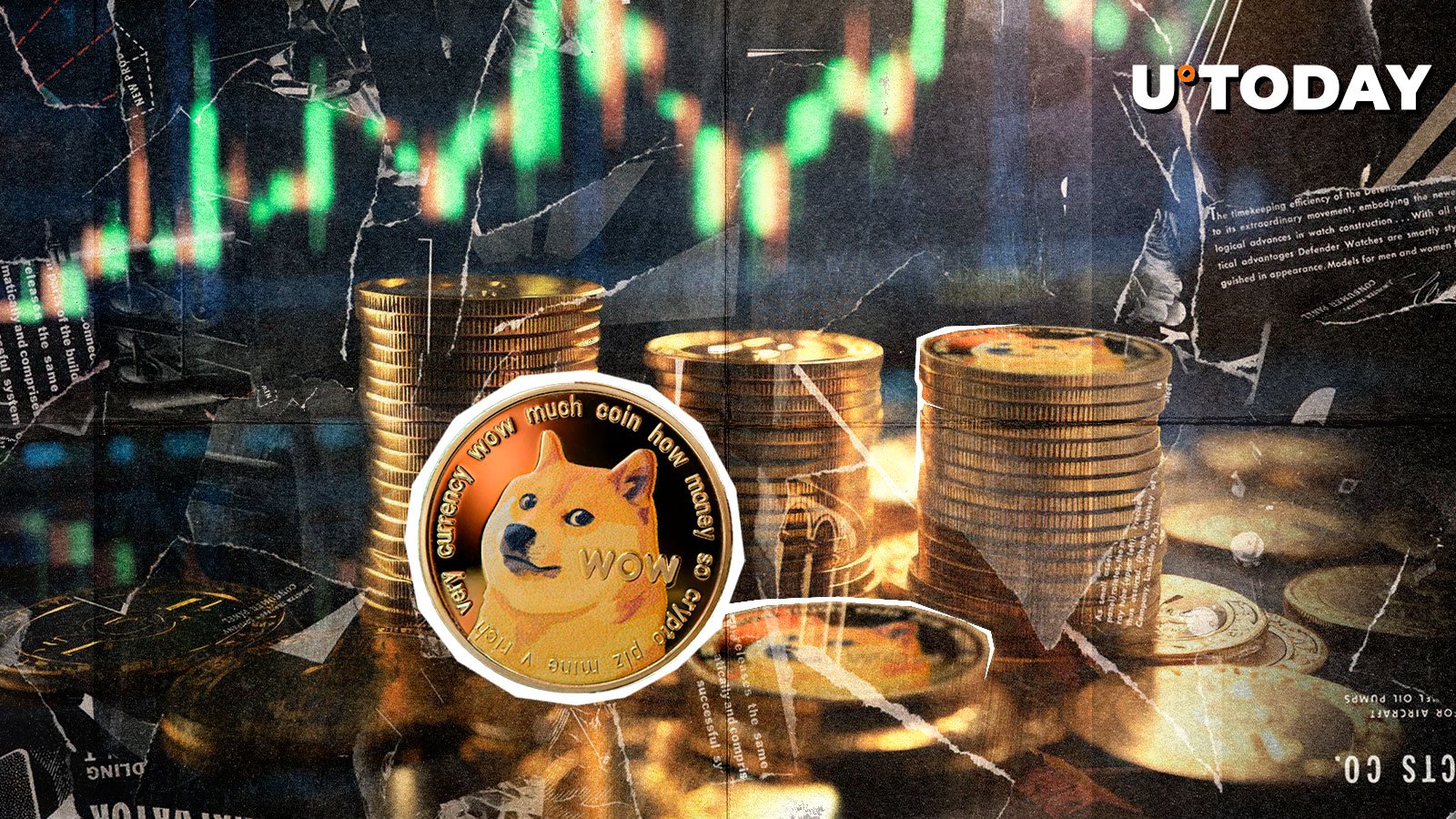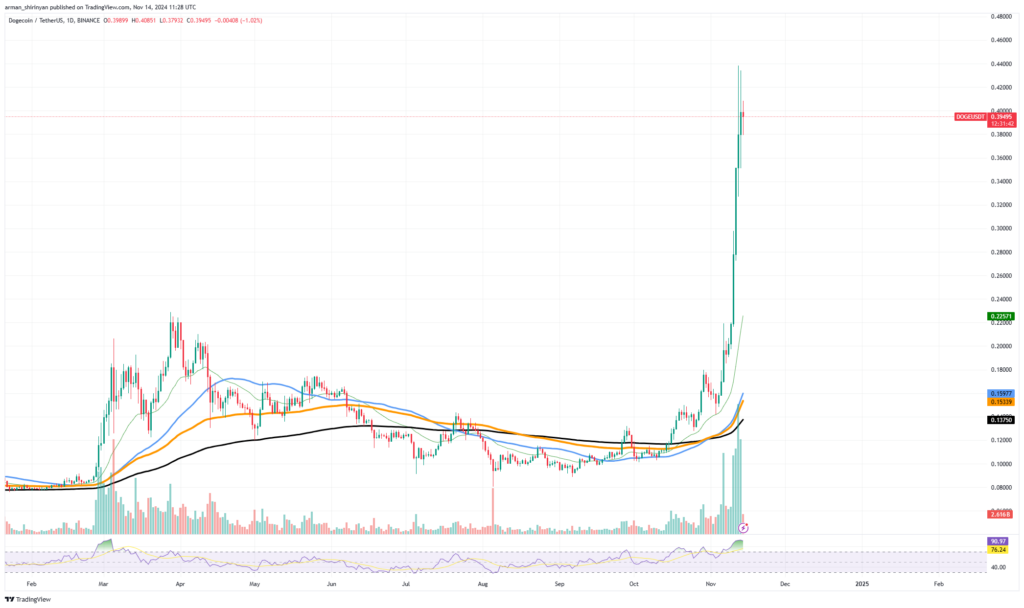
Dogecoin broke a one-year record for whale movements in a single day after recording an astounding 61 billion DOGE in big transactions. This sudden surge in whale-related activity has sparked questions about what may be happening behind the scenes.
A substantial redistribution or accumulation of assets may be indicated by large transactions, which show that whales, or major holders, are actively participating in the market. High levels of whale activity are often an indication of upcoming price volatility since whales have the power to significantly impact Dogecoin’s price due to the amount of their transactions.

An analysis of the on-chain data reveals that Dogecoin’s transaction volume is still strong, with over 60 billion DOGE traded in the previous day, in keeping with an explosive rally that has sent DOGE values to annual highs. According to IntoTheBlock’s study, 96.18% of addresses are presently in the money, indicating that the great majority of Dogecoin holders are benefiting.
The notion of strong market mood and the possibility of more upward movement are supported by this bullish on-chain signal. The price of Dogecoin, meantime, has risen sharply in recent weeks and is now close to $0.40. Retail investors have also returned to the market as a result of the price increase due to Dogecoin’s resurgence. Even while this would seem like a formula for long-term positive momentum, investors should watch the resistance zone at $0.40 and the next important milestone around $0.50. DOGE could be allowed to raise prices even further if these thresholds are breached.
On the other hand, prudence is required. Extremes in whale activity may often lead to either a steep sell-off or a price rise, which whales may attempt to capitalise on. If the bulk of recent whale transactions are sells rather than accumulations, Dogecoin could undergo a correction.


















